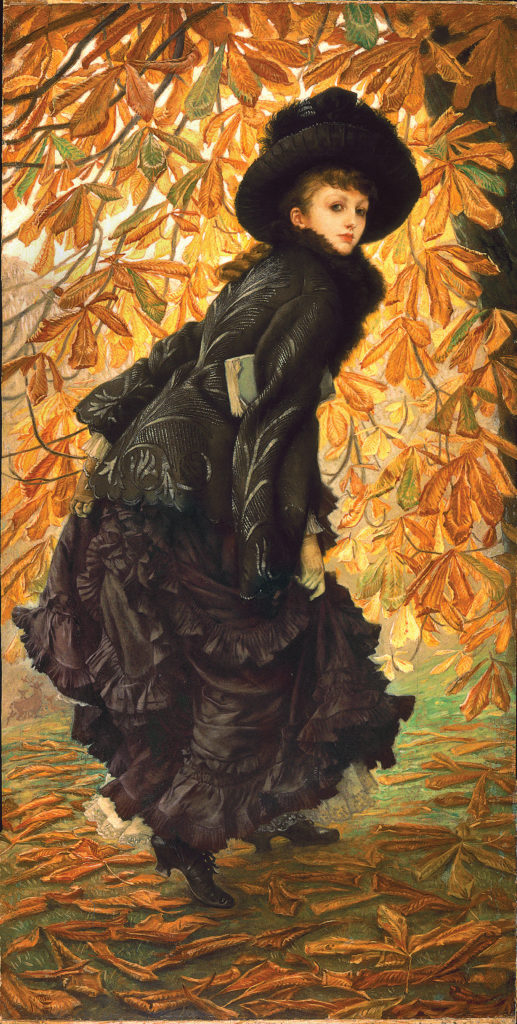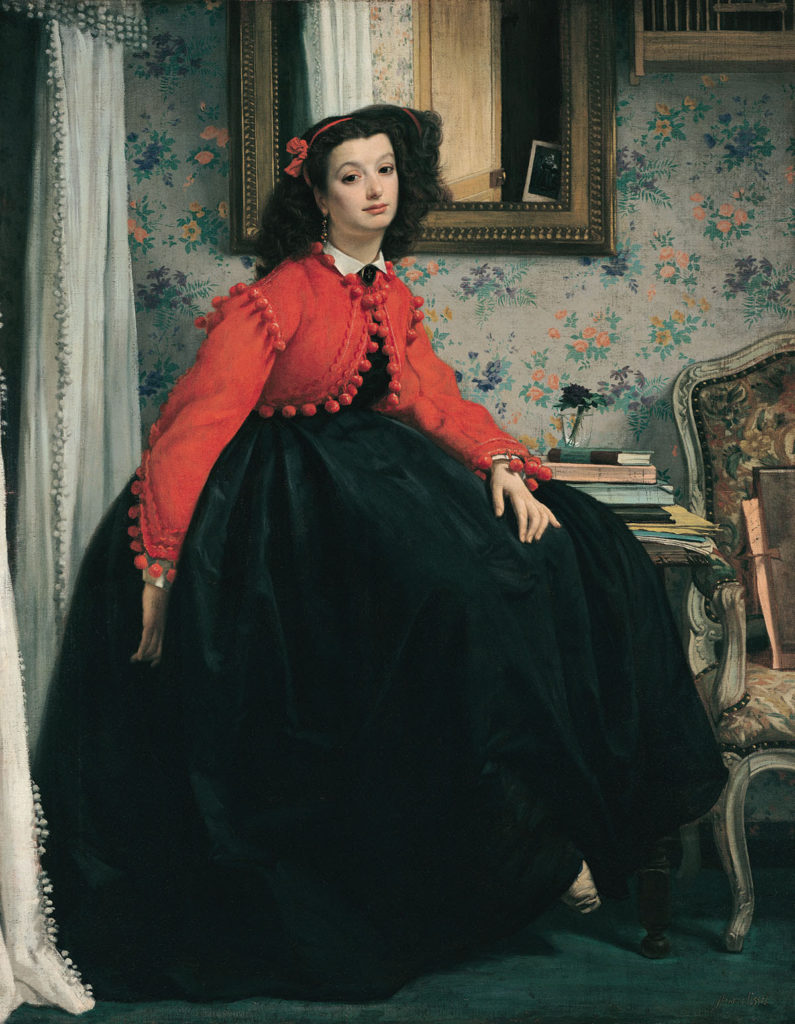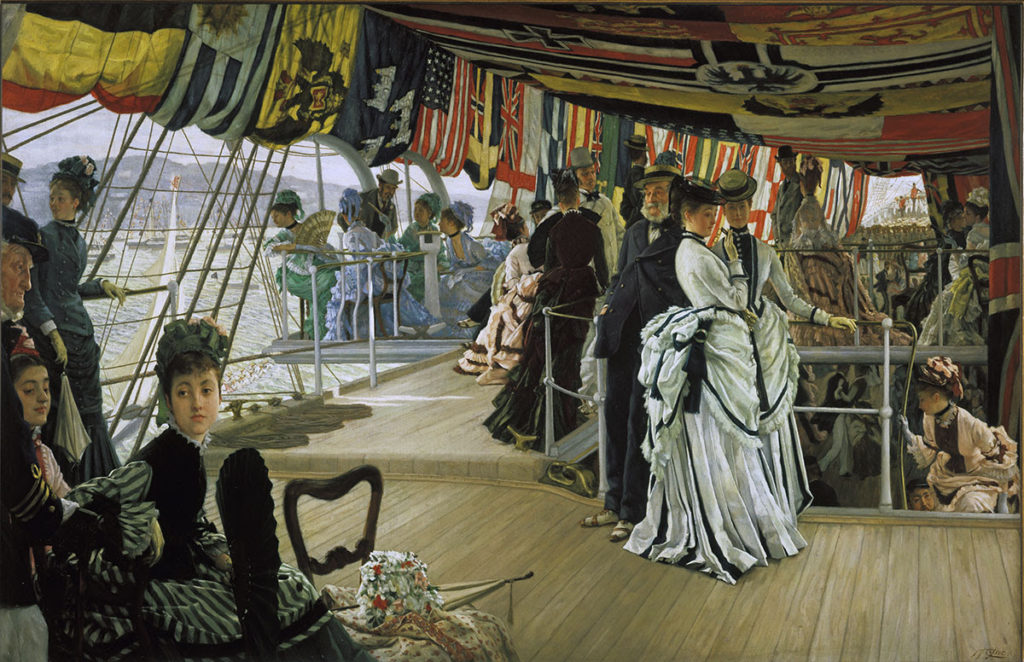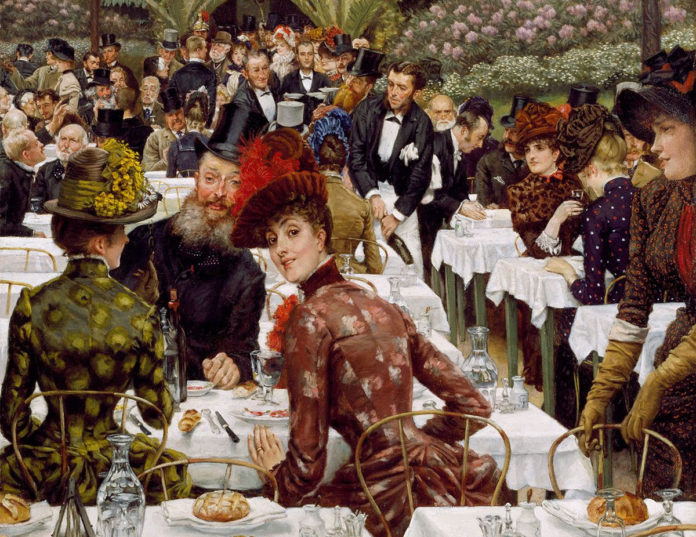Explore “James Tissot: Fashion & Faith,” the first exhibition on the U.S. West Coast dedicated to the remarkable life and oeuvre of the enigmatic artist. It presents new scholarship on the painter’s technique and practice, lending rich insight into the vibrant cultures of 19th-century Paris and London, including the artist’s interest in Spiritualism and biblical illustrations.

Greeting visitors, the life-size painting “October,” on loan from the Montreal Museum of Fine Arts, presents Kathleen Newton, a young divorcée who became the artist’s companion, frequent model, and greatest love. In one of Tissot’s largest and most finely detailed paintings, Newton is caught in motion with a swish of frothy pleats and petticoats, inviting us to follow her into the picture.
After the tragic early death of Kathleen Newton, the artist returned to Paris, embarking on an ambitious series of large-scale “pictures of Parisian life,” each depicting an archetype of the modern Parisian woman. The composition of “Painters and their Wives” (shown at top), from the Chrysler Museum of Art’s collection, includes the wives of artists gathered to celebrate the annual varnishing day before the opening of the Salon exhibition, where artists might make or break their careers.

A highlight of the gallery focusing on Tissot’s success as a portrait painter is “The Portrait of Mlle L. L.” On loan from the Musée d’Orsay, the life-size painting, which gained Tissot recognition at the Paris Salon, features a sophisticated young woman in an elegant interior. Important clues around Tissot’s interest during his first Paris period emerge, such as his ability to meticulously render fashion trends of the day, as well as his layering of complex compositional elements, seen in the woman’s inscrutable expression. Moreover, the cropping of objects in the room (such as the mirror, chair, and curtains) suggests a response to the new medium of photography.

Tissot’s iconic works turn a perceptive, often humorous eye on the social mores around him, his fascination with modern life apparent in works such as “The Ball on Shipboard.” Although he spent a decade of his life in London, Tissot never gave up his French citizenship. Many of his London-period paintings suggest that he is keenly aware of his role as a cultural outsider capturing important social events.
For more information about “James Tissot: Fashion & Faith,” please visit https://legionofhonor.famsf.org/.
Sign up to receive Fine Art Today, the free weekly e-newsletter from
Fine Art Connoisseur magazine.








